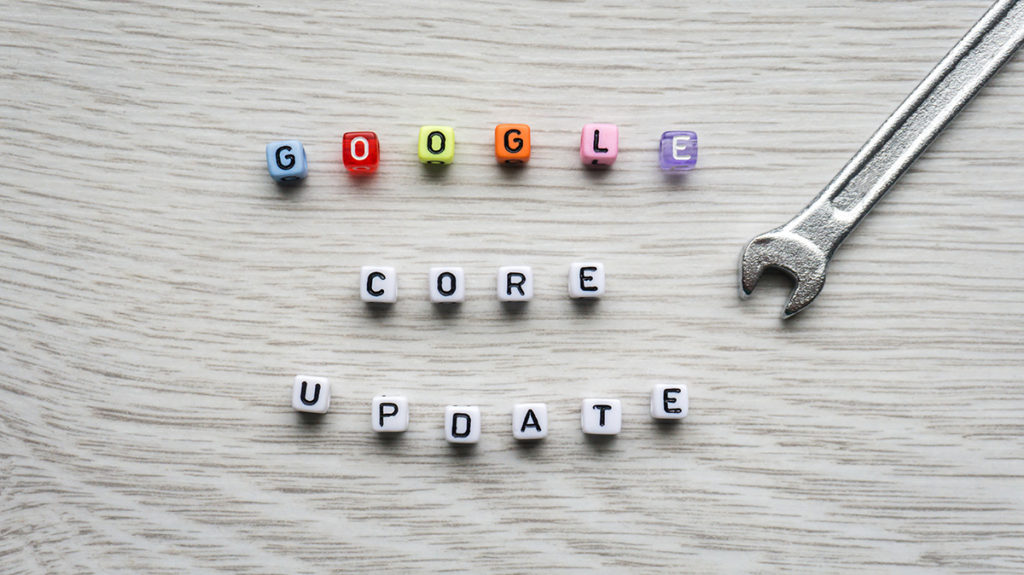Business owners and webmasters can rest easy for a month or two. Google is pushing back its Page Experience algorithm update, Core Web Vitals, update to mid-June.
Originally set to launch this month, Google has revised the rollout to give site owners another month to prepare for what has been predicted to be the biggest shake-up in search engine rankings since, well, ever!
To some, the news will be music to their ears. After all, the more time that you have to prepare for change of any kind, the less disruptive it’ll be, right? Many business owners still reeling from Covid-19, forced global lockdowns and the jolt to the economy and will undoubtedly welcome the chance to have an extra month to prepare their websites more thoroughly for the changes to come.

A Gradual Rollout Starting in Mid-June
In a recently published article, Google has promised a gradual rollout of the Core Web Vitals algorithm, starting in mid-June. This will allow them to monitor the impact the update will have in real-time, noting any unexpected or unintended issues. It’s believed that page experience won’t play a definitive role in ranking position until mid-August.
They’ll be no drastic changes, so there’s no need to worry. Your website won’t plummet down the rankings mid-way through the summer. Though this will create an opportunity for you to jump ahead of your competitors in Google rankings. Right now, is a great time for business owners to continue to make any necessary refinements to their websites, ensuring that when Google rolls out its new algorithm, you can get that jump on the competition.
What Signals Should Business and Website Owners Be Aware Of
As Google has said for the last year, the update will consider different page experience signals, of which Core Web Vitals is just one. These are a just part of a larger group of related factors that help determine how good user experience is.
Core Web Vitals focuses on page loading, interactivity and visual stability. Google defines these are the following:
Largest Contentful Paint (LCP) measures loading performance. A good user experience is one that loads pages in less than 2.5 seconds.
First Input Delay (FID) measures interactivity. A good user experience is one that responds to user actions in less than 100 milliseconds.
Cumulative Layout Shift (CLS) measures visual stability. A good user experience is one with a layout score of 0.1. Basically, page layouts don’t bounce around when you browse through a site.
These signals are the same whether users are browsing on a laptop, desktop computer or on a mobile device. So, business owners who are still hindered by their mobile website performance should optimise it before the new algorithm update… after all, as of April 2021, 56% of ALL websites accessed globally is through a mobile device!
But there’s more. Google News will expand its usage of non-AMP (HTML versions of existing webpages) content across news.google.com and mobile apps.
This intends to make sure that users get a more comprehensive view of the important news of the day as and when it happens – something that businesses can leverage to great effect to build their brand authority and publish relevant, valuable content to engage audiences at exact moment audiences will be searching for it.
Over the coming months, Google will continue testing ways to identify page content that offers users the best possible experience. But in the meantime, it doesn’t hurt to keep abreast of what’s going on. After all, website and business owners need only make subtle changes to improve user experience before Core Web Vitals is launched and this could have a significant impact on ranking and user experience.
New Page Experience Report in Search Console
Another feature of the Core Web Vitals update which Google will introduce is the Page Experience Report. This will be available to webmasters in Google Search Console and combines page experience signals, such as security and mobile friendliness with a Core Vitals Report.
What’s great about this report is that it provides valuable metrics like good URL page experience and search impressions over periods of time which allows webmasters and business owners to understand how well their website is performing. Not only that, dig a little deeper into the data and you can discover which aspects (page components) can be improved upon to improve overall user experience.
The Page Experience Report will include:
Mobile usability whereby Google will evaluate mobile pages and determine is they’re good, average or bad according to user experience
Security issues will be flagged by Google – of course, pages with compromised security will be determined as bad.
HTTPS usage will be determined by Google to make sure that all communication between the webpage and the user data is confidential and meets strict integrity standards.
Ad experience will also be assessed by Google with any pages using advertising techniques that are determined to be distracting, intrusive or compromise page experience will be flagged as being a bad user experience.
Not only that, webmasters and business owners can also dig into all page components to discover page elements that can be improved upon to promote a better overall user experience
It May Have Been Delayed but “Core Web Vitals” Is Just Around the Corner
Sure, Google has delayed the roll out of its Core Web Vitals algorithm but only for a month. If you’re in any doubt that your website is not up to scratch and is likely to be punished, now’s the time to act.
The good news is that Jungle Marketing can help you. Whether you want to optimise your website for Google Core Web Vitals or want to give your digital marketing a real shot in the arm, get in touch with us today. enquiries@jungle.marketing
